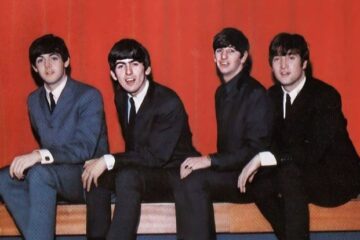‘Eleanor Rigby’ stands as a shining example of The Beatles’ artistry, effortlessly conjuring a kaleidoscope of interpretations with its finely crafted lyrical nuances.
Its poetic essence transcends boundaries, and, to some, it’s a poignant reflection on solitude, while others find it to be a lament on the elusive nature of memories, forever beyond grasp. The beauty of ‘Eleanor Rigby’ lies in its ability to remain timeless, becoming a canvas for myriad emotions and reflections.
Famously, the song was primarily written by Paul McCartney, with some contributions from his partner in crime John Lennon. McCartney’s inspiration for the material came from the desire to depart from the typical love-themed lyrics that were prevalent in many of their previous works. He wanted to explore a more sombre and introspective subject matter.
‘Eleanor Rigby’ tells the tale of two lonely individuals: Eleanor Rigby, an elderly woman who picks up rice after weddings, and Father McKenzie, a lonely priest who writes sermons that no one hears. While writing the song, though, McCartney encountered a few revisions before arriving at the piece we hear today.
“I was sitting at the piano when I thought of it,” he said. “The first few bars just came to me, and I got this name in my head… Daisy Hawkins picks up the rice in the church. I don’t know why. I couldn’t think of much more so I put it away for a day. Then the name Father McCartney came to me, and all the lonely people”.
He continued: “But I thought that people would think it was supposed to be about my Dad sitting knitting his socks. Dad’s a happy lad. So I went through the telephone book and I got the name McKenzie. I was in Bristol when I decided Daisy Hawkins wasn’t a good name. I walked ’round looking at the shops, and I saw the name Rigby. Then I took the song down to John’s house in Weybridge. We sat around, laughing, got stoned and finished it off”.
The character herself was based on someone very real, an old lady McCartney knew and got on with quite well. “I don’t even know how I first met ‘Eleanor Rigby’,” he said, “But I would go around to her house, and not just once or twice. I found out that she lived on her own, so I would go around there and just chat, which is sort of crazy if you think about me being some young Liverpool guy. Later, I would offer to go and get her shopping. She’d give me a list, and I’d bring the stuff back, and we’d sit in her kitchen”.
It was the unbearable loneliness of the woman that struck McCartney, which is why, a decade later, he wrote the song. “I still vividly remember the kitchen, because she had a little crystal-radio set,” he said. “That’s not a brand name; it actually had a crystal inside it. Crystal radios were quite popular in the nineteen-twenties and thirties. So I would visit, and just hearing her stories enriched my soul and influenced the songs I would later write”.
The unique composition at the heart of ‘Eleanor Rigby’ adds to this melancholic allure, creating a ghost within its very grooves heightened by its strings and vocal harmonies. Its meaning is often overlooked, but understanding its beauty comes when you see in its reflection a parable of modern life and the profound disconnection that exists even in the midst of a bustling society.



